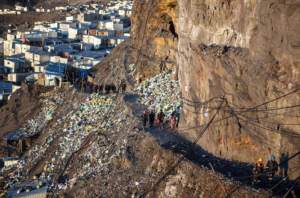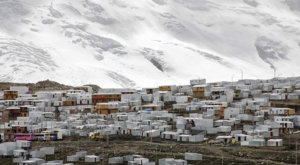Imagine waking up to a beautiful morning by the coast, only to find a weather alert on your phone warning of a coastal flood advisory. You might wonder what this means and how it could affect your day. Coastal flood advisories are essential alerts issued by weather authorities to inform the public about possible minor flooding in coastal areas. They are more common than you think and, without proper awareness and preparation, can cause unexpected disruptions.
In this post, we will dive deep into the significance of a coastal flood advisory and explore a real-life case study. And provide actionable steps to stay safe and informed. Using the PSA (Problem, Solution, Action) copywriting framework let’s break this topic down in a way that’s not only engaging but also provides clear, practical guidance.
Problem: The Growing Threat of Coastal Flooding

Understanding Coastal Flood Advisory
A coastal flood advisory is an alert issued when minor to moderate flooding is expected in coastal areas due to tides storm surges or other weather phenomena. Unlike a coastal flood warning, which signals more severe and widespread flooding an advisory indicates a lower risk but still requires attention and preparedness. The goal is to warn residents and visitors about potential hazards like water covering low-lying roads, beach erosion, and disruptions to daily life.
The Rising Concern: Why Coastal Flood Advisories Are Increasing

In recent years, coastal floods have become more frequent. This increase is not just due to normal weather patterns but is strongly tied to climate change and rising sea levels. According to data from the National Oceanic and Atmospheric Administration (NOAA), the frequency of “nuisance flooding” in coastal U.SIn the past 20 years. The number of cities has doubled. Even minor coastal floods can lead to long-term problems like infrastructure damage, increased erosion, and higher economic costs.
Real-World Impact: A Case Study of Coastal Flood Advisory in Miami, Florida
To put this into perspective, let’s look at Miami, a city that frequently experiences coastal flood advisories. In October 2023 a combination of a king tide (an especially high tide) and strong onshore winds led to minor flooding throughout Miami Beach. The advisory issued warned residents of water pooling on streets, making driving hazardous, and causing minor property damage. Businesses faced delays and tourists had to navigate flooded walkways.
While the advisory did not escalate to a warning, it highlighted the increasing risk and the need for effective communication and preparedness. Without the timely advisory and response, the situation could have escalated affecting more people and causing severe disruption.
Solution: How to Stay Safe During a Coastal Flood Advisory
Why You Should Pay Attention to Coastal Flood Advisories
It’s easy to overlook a coastal flood advisory especially when it doesn’t seem severe. Ignoring these warnings, nevertheless, might result in unsafe conditions

Even minor coastal flooding can:
- Create hazardous road conditions, especially in low-lying areas.
- Impact public transportation and commute times.
- This leads to unexpected property damage, particularly for homes and businesses near the shoreline.
- Increase the risk of water contamination from overflowing drains.
Nearly 25% of flood-related insurance claims originate from low-risk locations, according to FEMA. This statistic shows how crucial it is to take coastal flood advisories seriously, regardless of the perceived threat level.
How Coastal Flood Advisories Work
A coastal flood advisory is typically issued by the National Weather Service (NWS) or equivalent local authorities based on observed and predicted conditions. Factors like tides, wind patterns, storm surges, and atmospheric pressure are analyzed to determine the likelihood of coastal flooding. The advisory usually provides information on:
- The expected time frame of the flood risk.
- Specific areas are likely to be affected.
- Possible impacts and recommended actions for residents and visitors.
Preparing for a Coastal Flood Advisory: Practical Tips
- Stay Informed: Always monitor local weather updates, especially if you live in or plan to visit a coastal area. Use reliable sources like NOAA’s website or weather apps that provide real-time alerts.
- Plan Your Route: Flooded roads can make driving hazardous if you receive an advisory, plan alternate routes and avoid low-lying areas known for pooling water.
- Protect Your Property: If you live near the coast, consider flood-proofing your home. Simple measures like installing barriers, elevating electrical systems, and securing outdoor furniture can minimize damage.
- Observe Official Guidance: Pay close attention to what the local authorities say. If evacuation is advised, take it seriously, even if the water levels seem manageable.
Action: Steps to Take When a Coastal Flood Advisory Is Issued
Immediate Actions During a Coastal Flood Advisory

The moment a coastal flood advisory is issued, here’s what you should do:
- Check Local Alerts: Turn on notifications for your local weather service and emergency alerts. Websites like NOAA or your local meteorological department often provide detailed updates.
- Avoid Coastal Areas: Refrain from visiting beaches, coastal parks, or walking near the shoreline during the advisory period. The risk of sudden waves or unexpected surges can be higher than anticipated.
- Stay Off Flooded Roads: Even a few inches of water on the road can cause vehicles to hydroplane or stall. Driving into dangerous waters is the cause of more than half of drownings caused by floods, according to the Centers for Disease Control and Prevention (CDC).
- Secure Outdoor Items: Strong winds and water can easily carry away outdoor furniture, trash bins, and other items. Make sure these are safely secured or brought indoors.
Long-Term Preparation for Coastal Flooding
While immediate actions are crucial, it’s also important to prepare for future coastal flood advisories, especially if you live in a high-risk area.
- Invest in Flood Insurance: Many homeowners don’t realize that standard insurance policies do not cover flood damage. The National Flood Insurance Program (NFIP) offers coverage specifically designed to protect against flood-related losses.
- Create a Family Emergency Plan: Make sure everyone in your household knows what to do during a coastal flood advisory. Establish a meeting point, keep emergency contacts updated, and have a plan for pets as well.
- Elevate Critical Systems: If you live in a flood-prone area, consider elevating electrical panels, water heaters, and heating systems above potential flood levels.
- Participate in Community Initiatives: Many communities have programs aimed at reducing flood risks, such as improving drainage systems and building natural barriers like dunes and mangroves. Get involved and support these efforts.
Conclusion: Take Coastal Flood Advisories Seriously

Coastal flood advisories are not just routine weather updates; they are critical alerts designed to protect lives and property. As we’ve seen from the Miami case study, even minor flooding can lead to significant disruptions. The increasing frequency of these advisories is a clear indicator that coastal areas are becoming more vulnerable, making it essential for residents and visitors to stay informed and prepared.
By understanding what a coastal flood advisory means, recognizing the risks, and taking proactive steps, you can protect yourself, your loved ones, and your community. The next time you receive a coastal flood advisory, remember: It’s not just a suggestion—it’s a call to action.
FAQs: Coastal Flood Advisory
1. What makes coastal flood advice different from coastal flood warnings?
- A coastal flood advisory indicates minor flooding is expected, while a warning signals more severe and widespread flooding with a higher risk to life and property.
2. Can coastal flood advisories affect areas far from the coast?
- Typically, these advisories impact areas directly along the coast. However, strong storm surges or high tides can push water further inland, affecting nearby low-lying areas.
3. How often are coastal flood advisories issued?
- The frequency depends on the region and season. Some areas might experience several advisories during stormy weather or periods of high tides, while others may only see them occasionally.
4. Do I need special insurance for flood damage?
- Yes, basic homeowners insurance commonly will not cover flood damage. Purchasing separate flood insurance is advised, particularly if you reside in a coastal or flood-prone location.
5. What should I do if I am caught in a coastal flood?
- If you’re driving, turn around and find a safe, higher route. If you’re walking quickly go to higher ground. Do not attempt to walk or drive through flooded waters, as they may be deeper or faster-moving than they appear.
This comprehensive guide on coastal flood advisories provides actionable insights, practical tips, and real-world examples. By following these guidelines and staying alert, you can mitigate risks and ensure safety during coastal flooding events.
References:
- National Oceanic and Atmospheric Administration (NOAA)
- Federal Emergency Management Agency (FEMA)
- Centres for Disease Control and Prevention (CDC)
- Feel free to share this post to spread awareness about coastal flood advisories and help others stay safe!






